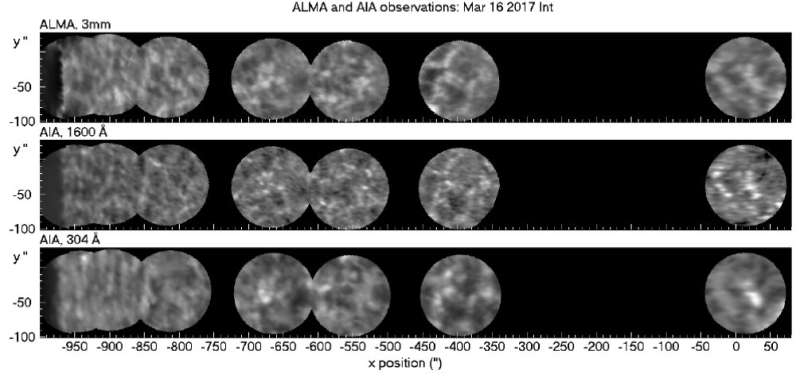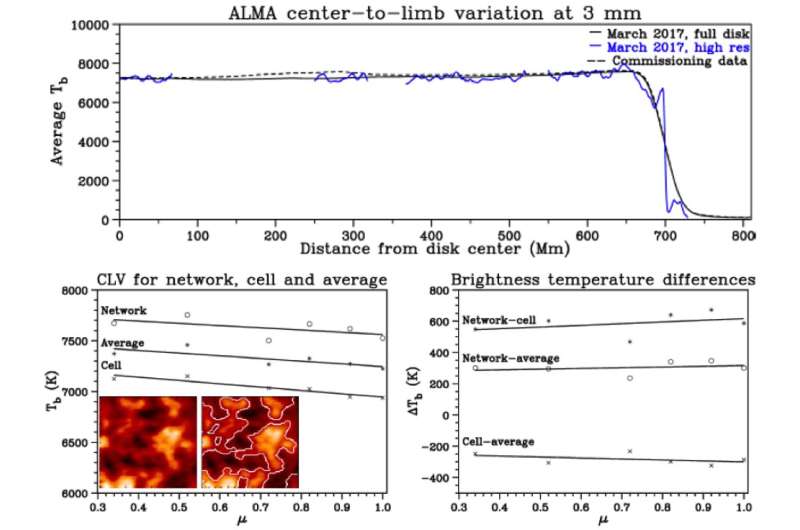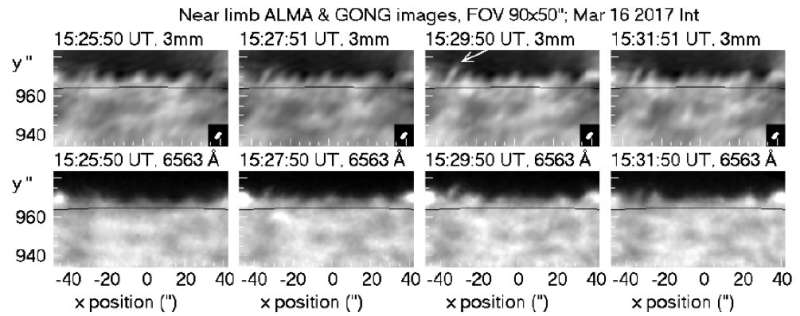First high-resolution look at the quiet Sun with ALMA at 3 mm

Observations of the radio continuum at millimeter (mm) wavelengths provide a unique chromospheric diagnostic. The quiet sun mm-wavelength emission mechanism is free-free and electrons are almost always in local thermodynamic equilibrium (e.g. Shibasaki et al. 2011 and Wedemeyer et al. 2016). The availability of mm-wavelength solar observations with ALMA can advance our knowledge on the chromosphere because of the instrument's unique spatial resolution and sensitivity. In a previous study, the researchers used ALMA full-disk (FD) commissioning data to study the quiet sun under low resolution. However, publications of results from ALMA high-resolution quiet sun observations are rare. The results have recently performed the analysis of such observations; results are reported in Nindos et al. (2018).
Seven regions were observed at 100 GHz on March 16 2017, from the limb to the center of the disk, along a line at position angle of 135o; each region was observed for 10 min with a cadence of 2 s. The visibilities were calibrated following the method described by Shimojo et al. (2017). Both average and snapshot CLEAN images were produced after self-calibration. Subsequently, all images were combined with a low-resolution FD ALMA image. The spatial resolution we achieved was about 4.5" x 2.5".

A composite of all average ALMA images, each with a field of view (FOV) of 120" is presented in the top row of Fig. 1; the other rows show similar composites of the corresponding AIA data in the 1600 and 304 Å bands, convolved with the ALMA beam. The chromospheric network is clearly visible at 3 mm; its morphology correlates equally well with the 1600 Å and the 304 Å structures. Moreover, at 100 GHz the structures are larger than at 1600 Å, but not as large as at 304 Å hinting that the radiation is formed in between.
The ALMA images show well the chromospheric network, which is brighter than the average by ~305 K while the intranetwork is less bright by ~280 K, with a slight decrease of contrast toward the limb. At 3 mm the network is very similar to the 1600 Å images, with somewhat larger size. The researchers detected spicules rising up to 15" above the limb with a width down to the image resolution and brightness temperature of ~1800 K above the local background. No trace of spicules, either in emission or absorption, was found on the disk.
In subsequent work, the researchers intend to exploit the CLV data for two-component atmospheric modeling, elaborate further on the larger size of the structures at 3 mm than at lower heights, and study oscillations and transients.

More information: A. Nindos et al. First high-resolution look at the quiet Sun with ALMA at 3mm, Astronomy & Astrophysics (2018). DOI: 10.1051/0004-6361/201834113
Journal information: Astronomy & Astrophysics
Provided by Community of European Solar Radio Astronomers




















